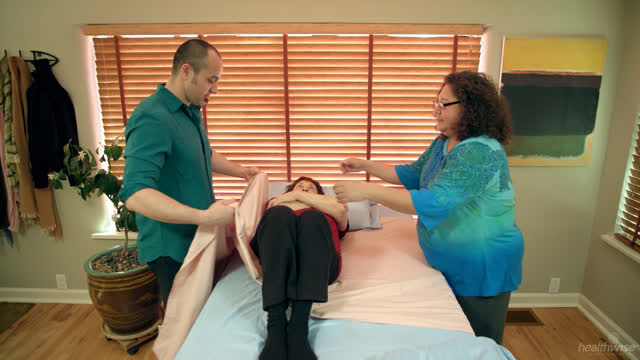Caregiving: Shaving an Adult
Topic Overview
Shaving facial hair can help your loved one feel clean and well-groomed. It also might help raise self-esteem by connecting the person to a daily routine.
Shaving isn’t only for men. As women age, it’s common to grow excess hair on the upper lip and chin. They may want to shave these areas or remove the hair with tweezers. It’s also common for women’s body hair to get thinner as they get older. So they may not need to shave their legs or under their arms.
Allow the person to do the shaving if possible. You can help by gathering the supplies and holding the mirror.
If you need to do the shaving, ask if the person wants to be shaved in a certain way, such as starting with the neck and working toward the face.
For most people, an electric shaver may be the best choice. A shaver is less likely to cause nicks and cuts than a razor. This is especially important if the person is taking medicines called blood thinners, which can cause more bleeding than usual. Also, using an electric shaver may be easier if the person has lost weight, because his or her face may have more angles to shave around.
Getting ready
- Make sure the room has lots of light so that you and the person can see well.
- It helps to have the person sit in a chair or sit up in bed. But you can shave a person who is lying down if you need to.
- Collect the supplies you need. These may include:
- A mirror.
- An electric shaver or a razor.
- Shave lotion for an electric shaver, if the person uses this type of lotion.
- Shaving cream for a non-electric razor.
- A towel to put on the person’s lap or chest to catch hair and shaving cream.
- A basin of warm water if you’re using a razor and shaving cream.
Shaving with an electric razor
- The face or other area should be clean and dry. Wash and towel dry, or use an electric-shaver product that’s made to clean the skin.
- Generally, hold the shaver so that the handle sticks straight out from the area to be shaved (at a 90-degree angle). If possible, ask the person how he or she holds it and ask about any special techniques.
- Use back and forth strokes. If you’re using a shaver with round heads (rotary shaver), move the razor in circles over the face and neck.
- Apply moisturizer or aftershave, if the person wants it.
- Clean the shaver according to the directions on the package.
Shaving with a razor and shaving cream
- Wash the face with warm water to soften the hair. Or shave after a shower.
- Apply the shaving cream.
- Shave down with the direction of hair growth. Shaving up can cause ingrown hairs and can irritate the skin.
- Press the razor firmly, but not too much. Ask the person how it feels. A heavier razor may help you shave more safely. The weight of the razor helps do the work and may keep you or the person from pressing down too much.
- Use short strokes, and be careful around the Adam’s apple, mouth, nose, and chin.
- Rinse the blade after every few strokes.
- Use a warm, moist washcloth to remove leftover lather. Then dry the area.
- Apply moisturizer or aftershave, if the person wants it.
Current as of: April 1, 2019
Author: Healthwise Staff
Medical Review:Kathleen Romito MD – Family Medicine & E. Gregory Thompson MD – Internal Medicine & Gayle E. Stauffer , RN – Registered Nurse
This information does not replace the advice of a doctor. Healthwise, Incorporated, disclaims any warranty or liability for your use of this information. Your use of this information means that you agree to the Terms of Use. Learn how we develop our content.




